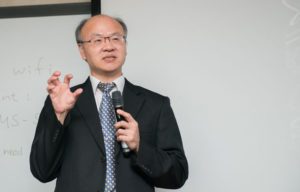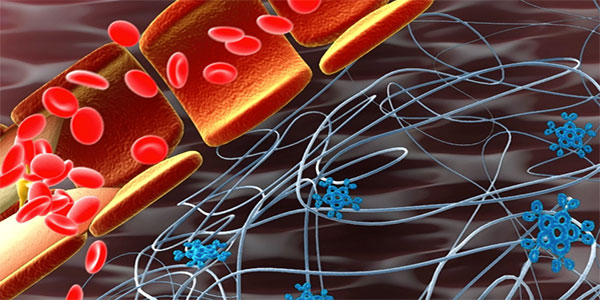UW Bioengineering faculty James Lai, Suzie Pun and Patrick Stayton, and BioE Ph.D. alumnus and affiliate faculty member Patrick Hsieh, are among contributing authors of a paper describing a novel treatment for limb ischemia. The UW researchers partnered with Dr. Hsieh’s home institution, the Institute of Biomedical Sciences of Taiwan’s Academia Sinica, and the team published their findings November 16 in Science Translational Medicine.
Limb ischemia is a condition that limits the flow of oxygenated blood to the legs and feet. It is commonly found in patients with diabetes, high blood pressure and high cholesterol, and results in pain and difficulty walking. Sometimes, amputation of an affected limb is required.
A treatment strategy for limb ischemia has been to regenerate blood vessels in damaged tissue using growth factor proteins. However, human trials have yielded disappointing results. The drugs show poor half-life in circulation, and are difficult to deliver to the site of injury. “Regeneration of blood vessels is not easy, even with the use of drugs or cell therapy it is not possible to continuously deliver the therapy precisely to injured tissues,” explained Dr. Hsieh in an Academia Sinica press release.
The researchers from UW and Academia Sinica designed a “drug capture system” that addresses these challenges. The new system improves the targeting of growth factor proteins by first delivering antibodies in a hyaluronic acid hydrogel to the injured tissue. The antibodies “capture” the growth factor by binding the drug, helping it build up to achieve a therapeutic effect.
The team found that their system improved recovery in mice and pig models of hind limb ischemia. In mice, they demonstrated the system’s utility in delivering complex, multi-step therapies. Following injection of the antibody, they administered two different growth factor drugs – one to protect further damage, and later, another drug to prompt the formation of new blood vessels. The treatment saved the limbs of the mice, and increased blood flow by 40%.

Patrick Hsieh.
The researchers’ findings not only present promising findings in the treatment of limb ischemia, but may also lead to advances in treating cardiovascular disease. They are hopeful that their system can offer new strategies for regenerating cardiac tissue and restoring cardiac function following heart attacks. The system may also have applications in cancer treatment.
Dr. Hsieh is a 2003 graduate of UW BioE’s Ph.D. program. Initially trained as a cardiac surgeon, Dr. Hsieh’s multidisciplinary research program at Academia Sinica combines his experience as a physician and education as a bioengineer. Read more about Dr. Hsieh in ‘Alumnus Patrick Hsieh confronts challenges in cardiac stem cell therapy.’
Read Academia Sinica’s news release (PDF)


